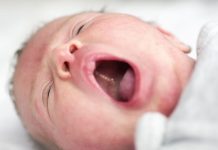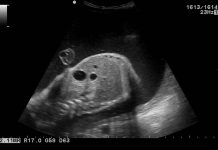According to CDC, Autism spectrum disorders (ASDs) are a group of developmental disabilities, as discussed in our previous post on “Autism in Infants – Symptoms, Risk and Detection”, that can cause significant social, communication and behavioural challenges in an individual. Autism Spectrum Disorder includes six major disorders which are discussed below in details:
Autism Spectrum Discorder in Children

- Pervasive Developmental Disorder is observed in toddlers with delay in the development of basic skills such as socializing, communicating, and most importantly the use of imagination. One of the major problems that arise is that the child is very confused about what to think and what not to think and face difficulties in understanding the world around them.
- Diagnostic and Statistical Manual of Mental Disorders: Under Autism Spectrum Disorders, Diagnostic and Statistical Manual of Mental Disorders. This is also a broad term which encompasses different orientations such as biological, psychodynamic, cognitive, behavioral, interpersonal and family to name a few. (www.who.int)
- Pervasive Developmental Disorder Not Otherwise Specified or PDD-NOS is sometimes incorrectly referred to as PDD or Pervasive Developmental Disorder. In PDD-NOS, a few symptoms of autism and few symptoms of PDD are found. PDD-NOS is particularly difficult to find because, the child might have normal IQ, socially interactive, etc. But, there are subtle signs of autistic behavior such as behavioral rigidity, imposing routines in social interactions, etc. (http://childstudycenter.yale.edu)
- Childhood Disintegrative Disorder or CDD generally develops during the 3rd or 4th year. After the disorder develops and sets in the child starts to lose language skills, motor, social and other skills that he or she has learned already. The cause of CDD is actually unknown. This condition is very similar to autistic spectrum disorder. Consult your pediatrician if your child is losing his or her abilities or there are unusual delays in the developmental progress.
- Rett Syndrome is also very similar to CDD due to the fact that there are also reversals of child development. More often, the reversal is seen in the areas of language, communication and motor skills. Rett Syndrome is found more in girls than in boys and often it is diagnosed as autism or cerebral palsy. Rett Syndrome is linked to one gene on the X chromosome. As girls have two X chromosomes, they are most likely to develop this disorder.
- Asperger Syndrome is considered to be high functioning autism. In this condition, the child has average or above average IQ, the motor skills are good, the communication skills are also good, their language skills are also appropriate but, the development of Asperger Syndrome can lead to difficulty in interacting socially, repeat behaviours and sometimes clumsiness. Most of the times, their social skills would leave them as a person who imposes socially, even when the people around him are not interested.(http://www.ncbi.nlm.nih.gov)
Frequently asked queries about Autism:
- What’s the difference between autism and Asperger’s?
Autism is the broad category of disorders and Asperger’s Syndrome is a specific disorder which comes under Autistic Spectrum Disorder. While in autism, the patient seems to be disconnected from the outside world, in Asperger’s Syndrome, the patient might have normal IQ, which is quite opposite to what is observed in autism. Patient with Asperger’s seems to be fully aware of what is going around in him. In some cases, he is also aware of his lag in communication, socialization and behaviour. While in autism, the patient might not have normal IQ and also lacks social and communication skills.
- What is the difference between high functioning autism and autism?
Scientifically, there is no such term called high-functioning autism. It is not an official term. The name is very generic in nature without any scientific base. There are autistic people who function normally, as in with high IQ levels, appropriate language skills, holding eye contact, playing games, etc. Some researchers have associated Pervasive Development Disorder Not Otherwise Specified (PDD-NOS). In most cases, the symptoms of PDD-NOS or high functioning autism do not correlate with the symptoms of autism.












